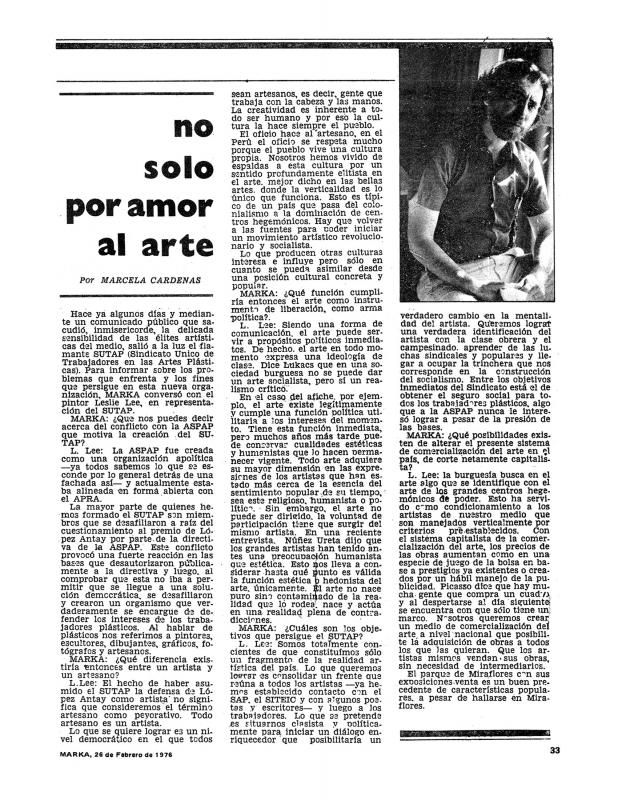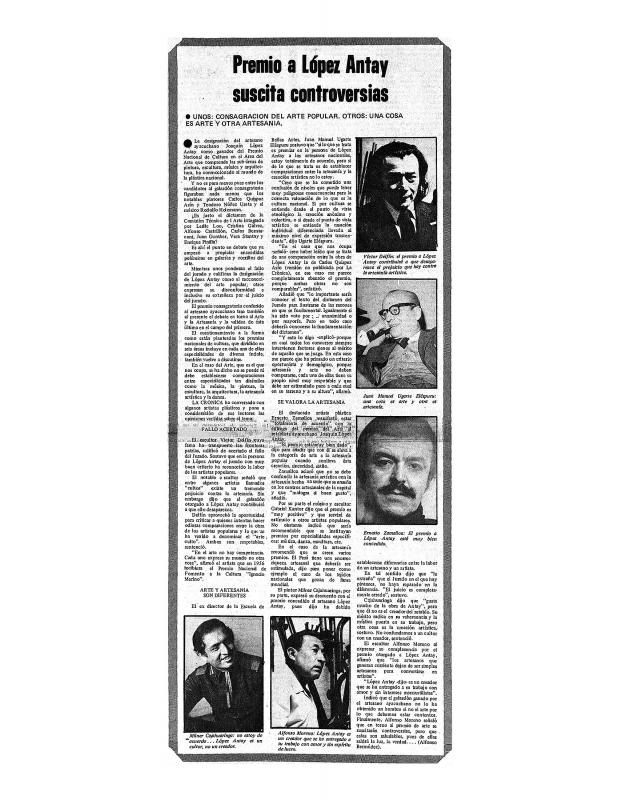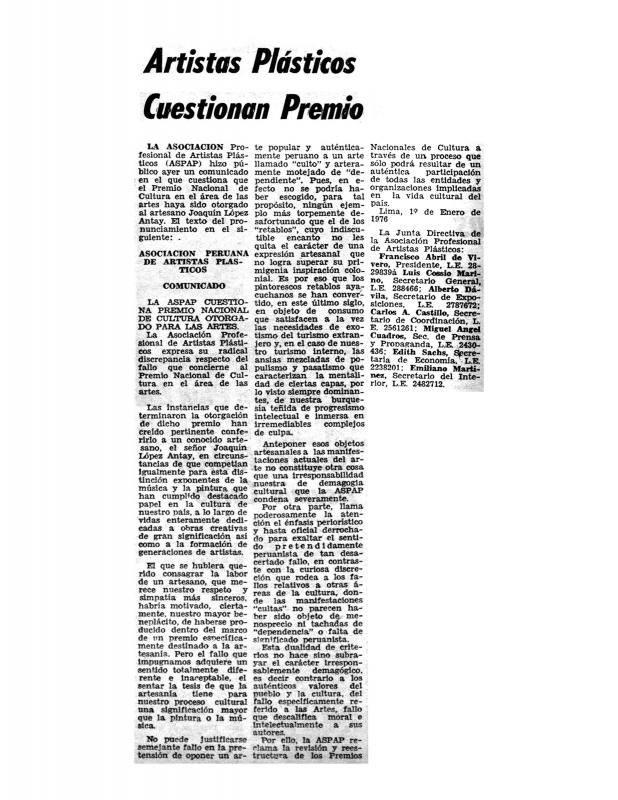Alfonso Castrillón (b. 1935) was a member of the jury that awarded the art prize to López Antay; he also authored important theoretical arguments on this matter, some of which are included in this article together with copies of the three most representative documents involved in the debate: the ruling that named López Antay as the winner of the National Culture Prize; the communiqué in which ASPAP (Asociación Peruana de Artistas Plásticos) challenged the ruling; and the founding statutes for SUTAP (Sindicato Único de Trabajadores de las Artes Plásticas).
In this article Castrillón defends the social function of art, noting that the heated debate on this subject thrust Peru into the company of other countries that had been roiled by similar controversies. In Brazil, for example, over the vast critical work by Mário Pedrosa (1901–81), and in Mexico over the works of Néstor García Canclini (b. 1939) and Juan Acha (1916–1995). In Peru the affair was illuminated by the theoretical ideas expressed by Mirko Lauer (b. 1947).
An announcement on December 26, 1975 confirmed that the National Culture Prizes (for the 1973–74 biennium) had been awarded by the Peruvian government through the Instituto Nacional de Cultura to honor the greatest contributions to the development of Peruvian culture. The jury’s decision in the art category (which had traditionally included painting, sculpture, music, and architecture) ignited one of the most heated debates in the history of Peruvian art. The ensuing controversy underscored simmering tensions and suspicions regarding the cultural policies of the revolutionary government of the armed forces led by General Juan Velasco Alvarado (1968–75). This administration claimed to be committed to a progressive agenda, a claim supported mainly by the Agrarian Reform of 1969 which was accompanied by the government’s enthusiastic attempt to glorify the image of the peasant population and lifestyle at the expense of other forms of cultural expression that were considered more “Western.” On this occasion the prize was awarded to Joaquín López Antay (1897–1981), who was chosen over well-known visual artists such as Carlos Quízpez Asín (1900–83) and Teodoro Núñez Ureta (1912–88) and the German-born academic musician Rodolfo Holzmann (1910–92).
[As complementary reading on the subject of SUTAP, see the following articles in the ICAA digital archive: (anonymous) “El arte y el deber social: declara Ciro Palacios, dirigente de los trabajadores de las artes plásticas” (doc. no. 1136396); by A.B.C. “Contra toda manipulación en el arte” (doc. no. 1136349); by Juan Gargurevich “Deslinde en la pintura: progreso vs. reacción” (doc. no. 1136301); by Luis Freire Sarria “López Antay levanta polvareda” (doc. no. 1136317); (anonymous) “Manifiesto: acta de fundación: Sindicato Único de Trabajadores en las Artes Plásticas” (doc. no. 1136267); and by Marcela Cárdenas “No sólo por amor al arte” (doc. no. 1136333). On the subject of the debate sparked by this event, see the following articles: by Alfonso Castrillón, Leslie Lee, and Carlos Bernasconi “Fundamentación para el dictamen por mayoría simple a favor del artista popular Joaquín López Antay” (doc. no. 1135896); by Alfonso Bermúdez “Premio a López Antay suscita controversias. Unos: consagración del arte popular. Otros: una cosa es arte y otra artesanía” (doc. no. 1135879); by Francisco Abril de Vivero, Luis Cossio Marino, and Alberto Dávila “Artistas plásticos cuestionan premio” (doc. no. 1135960); and (anonymous) “‘No todos nos quieren ni en Lima ni en Ayacucho’: así comentó sobre cuestionamiento a premio” (doc. no. 1135930)].










